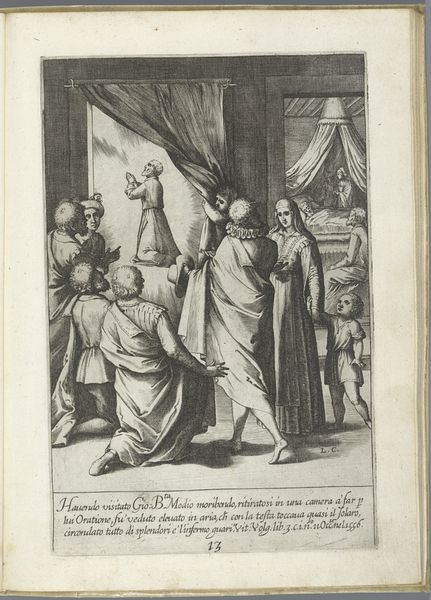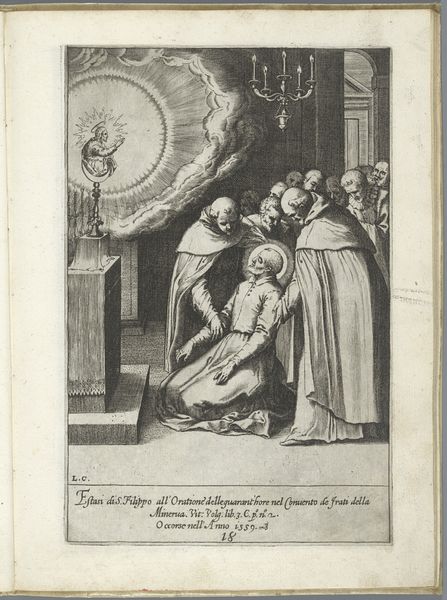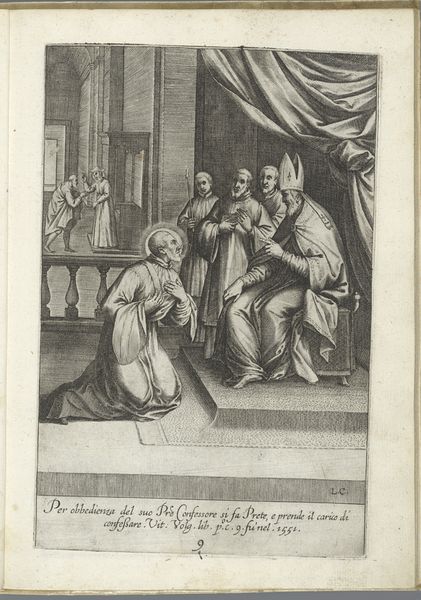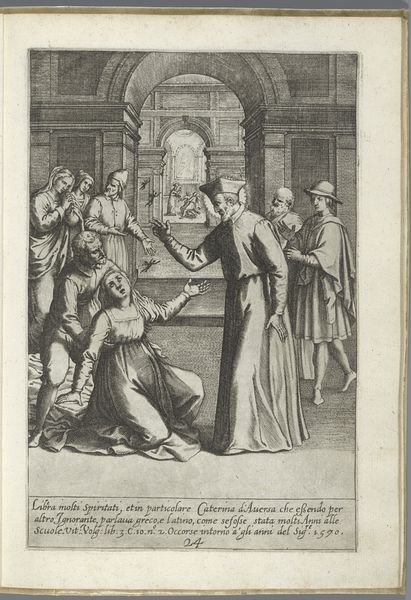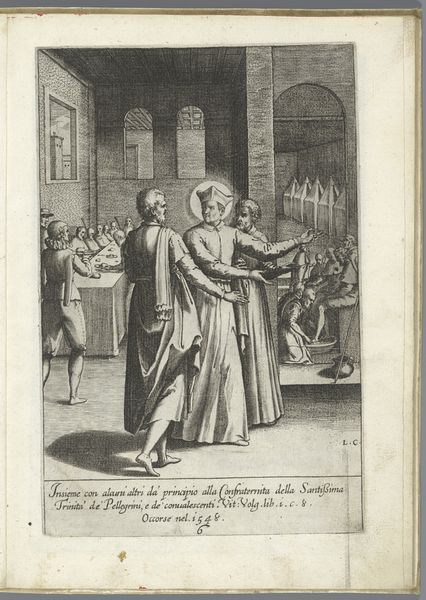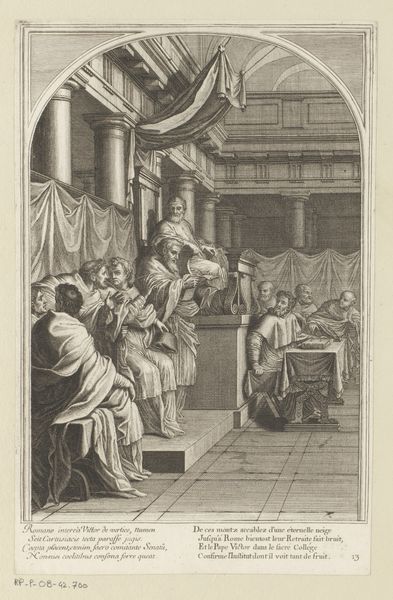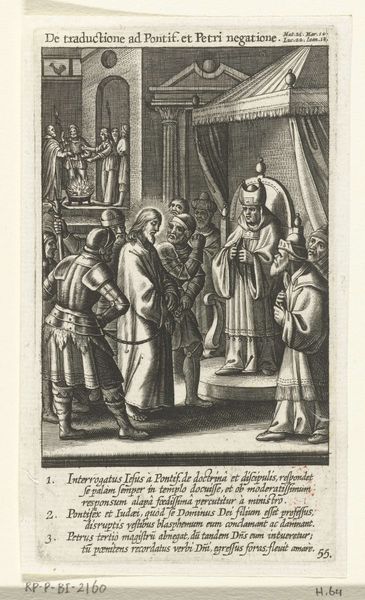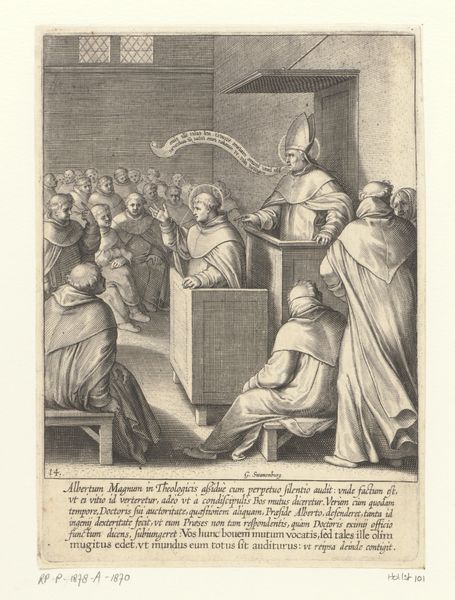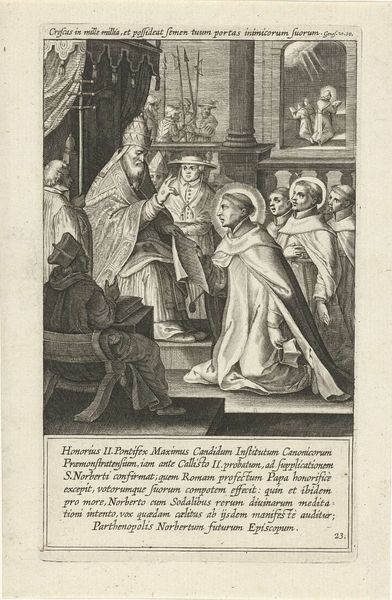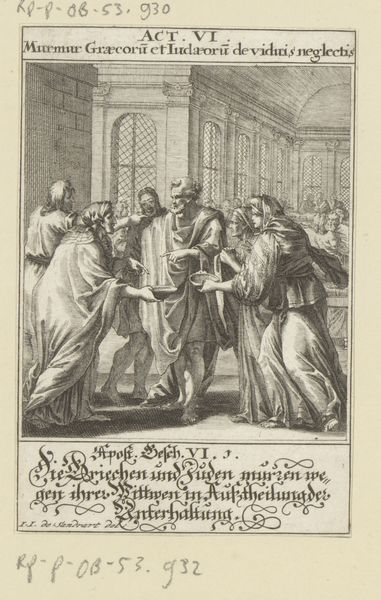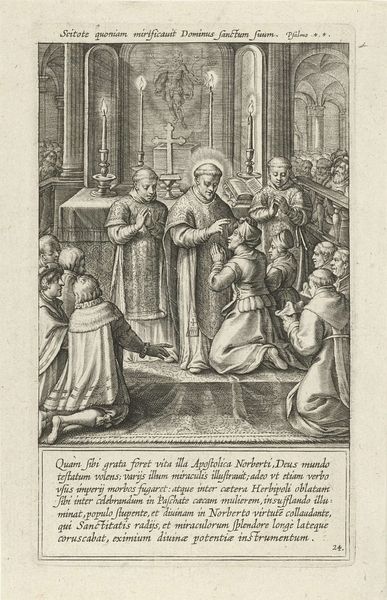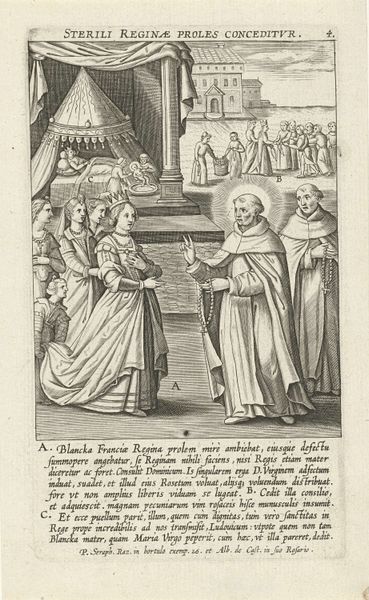
Filippo Neri verkrijgt van paus Gregorius XIII toestemming om de Orde der Oratorianen te stichten 1630 - 1641
0:00
0:00
print, intaglio, engraving
#
baroque
# print
#
intaglio
#
history-painting
#
engraving
Dimensions: height 228 mm, width 150 mm
Copyright: Rijks Museum: Open Domain
Curator: Looking at this print, the atmosphere feels decidedly formal. Stark, even. Editor: Well, let's place this engraving first. This intaglio print, made between 1630 and 1641 by Luca Ciamberlano, depicts Filippo Neri receiving permission from Pope Gregory XIII to found the Oratorian order. Curator: Right, that's the historical event displayed. I immediately pick up on how Neri's kneeling posture is indicative of the clear power dynamic at play here, emphasizing the authority vested in the papacy. Editor: And the setting, a rather austere papal chamber, certainly reinforces that power structure. Note how the figures are positioned-- Gregory XIII enthroned, surrounded by his cardinals, while Neri kneels with the documents affirming his order. This isn’t just about individual piety, it’s about the institutional backing. Curator: Precisely, we see the social role of art visualized here as it becomes the perfect tool to further ideas that endorse institutional frameworks. It speaks volumes about the church’s investment in controlling spiritual practices through sanction and documented allowance. Editor: Though monochromatic, Ciamberlano does use light and shadow to create depth. Do you think the baroque style influences this kind of chiaroscuro for political gain as well? To better dramatize the legitimacy of papal law and create religious devotion? Curator: Undoubtedly. I believe Neri's subtly illuminated face is framed almost heroically as he pledges submission. Consider, too, the print's dissemination - an effective tool to educate or perhaps indoctrinate broader audiences about hierarchical social order, obedience, and devout practice. The narrative reinforces these things through an appeal to historical events, right? Editor: The engraving, a reproducible medium, was likely intended for circulation amongst the clergy and faithful alike, and maybe as part of a broader propaganda campaign that supported the expansion and formalizing of various religious orders during that time. What I am interested in knowing is whether prints like these affected people of different social classes and religious groups in distinct ways, or was its impact overarching despite different positionalities? Curator: An important question, one that shows just how crucial it is to consider reception alongside intention when engaging with historical visual media like this one. Editor: A productive exploration indeed, illuminating the multiple functions art could serve in seventeenth-century Rome.
Comments
No comments
Be the first to comment and join the conversation on the ultimate creative platform.
